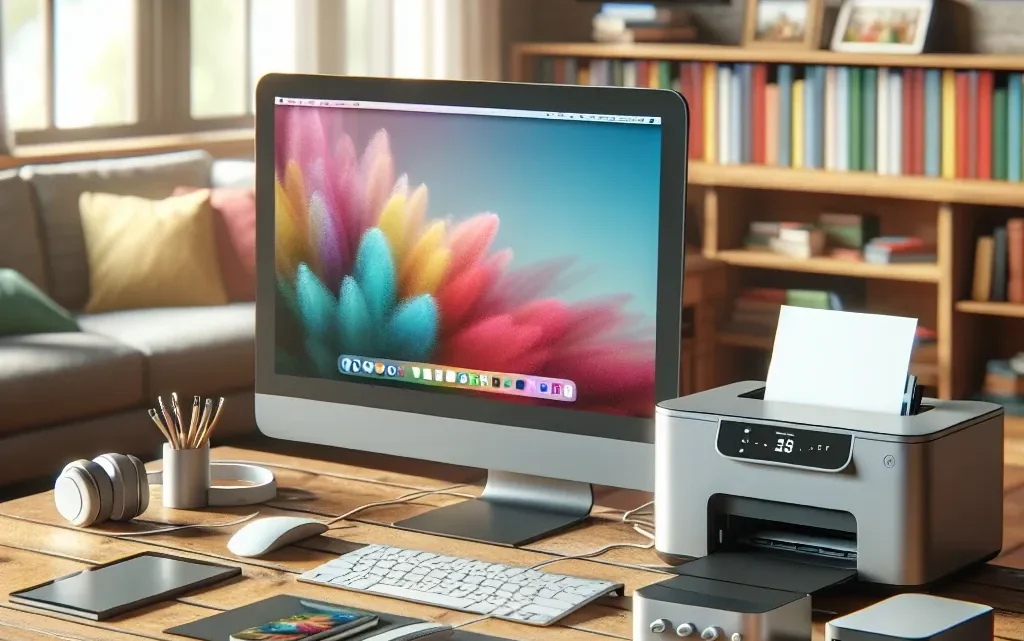In today’s digitally-driven world, creating an efficient home office setup is essential for productivity. Many individuals and businesses rely on printers for their daily tasks, but as device inventories grow, the question arises: Can I use a USB hub with my home office printer? Understanding the compatibility and functionality of USB hubs with printers can significantly enhance your workspace.
| Aspect | Details |
|---|---|
| USB Hub Type | USB 2.0, USB 3.0, powered, non-powered |
| Printer Type | Inkjet, laser, multifunction |
| Connection Type | Direct USB connection vs. USB hub |
| Compatibility | Operating system support |
| Performance | Data transfer speed impact |
Understanding USB Hubs
A USB hub is a device that expands a single USB port into multiple ports, allowing you to connect various devices like keyboards, mice, and printers. Hubs can be either powered (with their own power supply) or non-powered (drawing power from the connected device). While USB hubs are convenient, there are several factors to consider when connecting them to a printer.
Considerations for Using a USB Hub with Your Printer
1. Printer Compatibility
Not all printers work seamlessly with USB hubs. It’s important to verify your printer model’s specifications. Most recent printers are designed with USB connections in mind, but some older models may experience issues or reduced performance when connected through a hub.
2. Hub Type
- USB 2.0 vs. USB 3.0: It’s preferable to use a USB 3.0 hub if your printer supports it since it offers higher data transfer speeds compared to USB 2.0.
- Powered vs. Non-Powered: A powered hub is recommended for connecting devices like printers, ensuring sufficient power supply for optimal performance.
3. Data Transfer Speeds
Understanding data transfer speeds is crucial when using a USB hub. Here’s how they generally compare:
| USB Type | Maximum Speed |
|---|---|
| USB 2.0 | 480 Mbps |
| USB 3.0 | 5 Gbps |
| USB 3.1 | 10 Gbps |
A hub can act as a bottleneck if multiple high-speed devices are connected, impacting performance.
Benefits of Using a USB Hub with Your Printer
1. Enhanced Connectivity
Having a USB hub allows additional devices to connect, such as external hard drives, scanners, or cameras, without the need to frequently swap cables.
2. Increased Port Availability
For home offices with numerous peripherals, a hub solves the issue of limited USB ports, keeping your setup organized and efficient.
3. Simplified Cable Management
A hub can minimize cable clutter by consolidating multiple connections into one central location.
Limitations of Using a USB Hub with Your Printer
1. Potential for Reduced Performance
If a USB hub is overloaded with devices, your printer may experience slower communication and printing issues.
2. Driver Compatibility Issues
Some printers have strict driver compatibility, which can limit functionality when passing through a hub versus a direct connection to the computer.
3. Power Management Challenges
Non-powered hubs may not supply enough power to high-demand devices, leading to connectivity drops or malfunctions.
Tips for Effective Use of USB Hubs with Printers
1. Choose the Right Hub
Select a USB hub that fits your needs. Prioritize USB 3.0 hubs with power adapters for the best performance.
2. Direct Connection When Needed
For critical printing tasks, consider connecting your printer directly to your computer temporarily to ensure optimal performance.
3. Update Drivers Regularly
Ensure that your printer drivers and USB hub firmware are up-to-date to minimize compatibility problems.
Alternative Connections to Consider
If using a USB hub doesn’t seem suitable, there are other ways to connect your printer:
1. Wireless Printing
Many modern printers offer wireless capabilities, allowing you to connect via Wi-Fi. This can eliminate the need for a USB hub altogether.
2. Network Printing
Using a networked printer that connects directly to your router can negate the need for USB connections, improving print accessibility across multiple devices.
Conclusion
Using a USB hub with your home office printer is possible, but it comes with its own set of benefits and limitations. By carefully selecting a compatible hub and managing your setup effectively, you can enhance your printing capabilities while keeping your workspace organized. Always consider the connection requirements of your devices and choose the best option for your home office needs.


